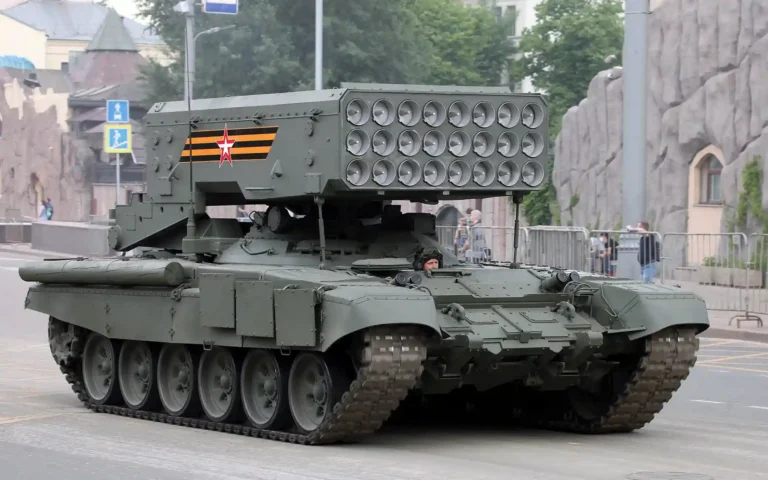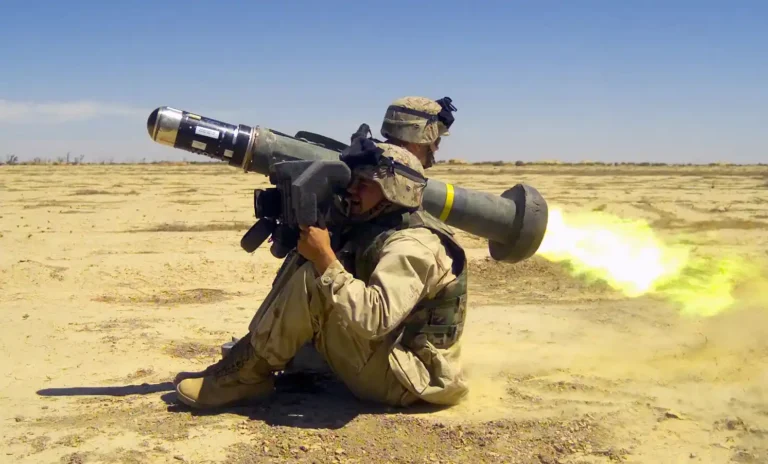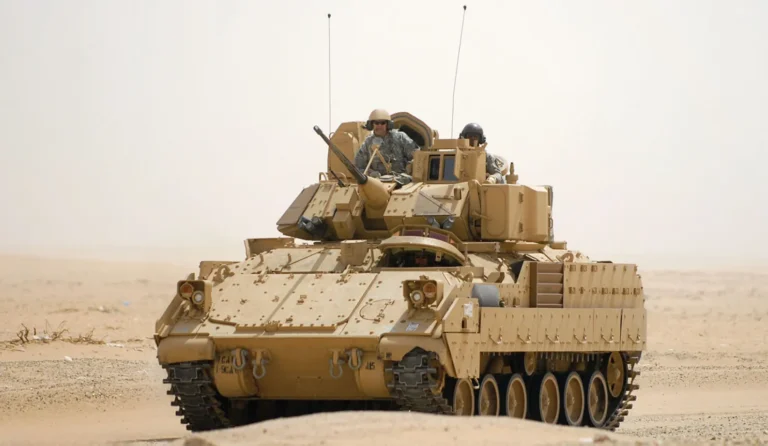Follow Us:
Share
Table of Contents:
The FV101 Scorpion Tank, a British light tank and reconnaissance vehicle, holds a notable place in the evolution of armored warfare. Developed in the late 1960s, it officially entered service in the mid-1970s.
The Scorpion light tank was designed to meet the British Army’s demand for a fast, mobile reconnaissance platform that effectively engages lightly armored targets. Part of the Combat Vehicle Reconnaissance (Tracked), or CVR(T) family, the FV101 Scorpion Tank was developed by Alvis Vehicles Ltd, a British company now part of BAE Systems.
The CVR(T) series was conceived with versatility in mind, aiming to produce a range of light armored reconnaissance vehicles that were not only lightweight and air-transportable but also adaptable to the varied operational needs of the British Army.
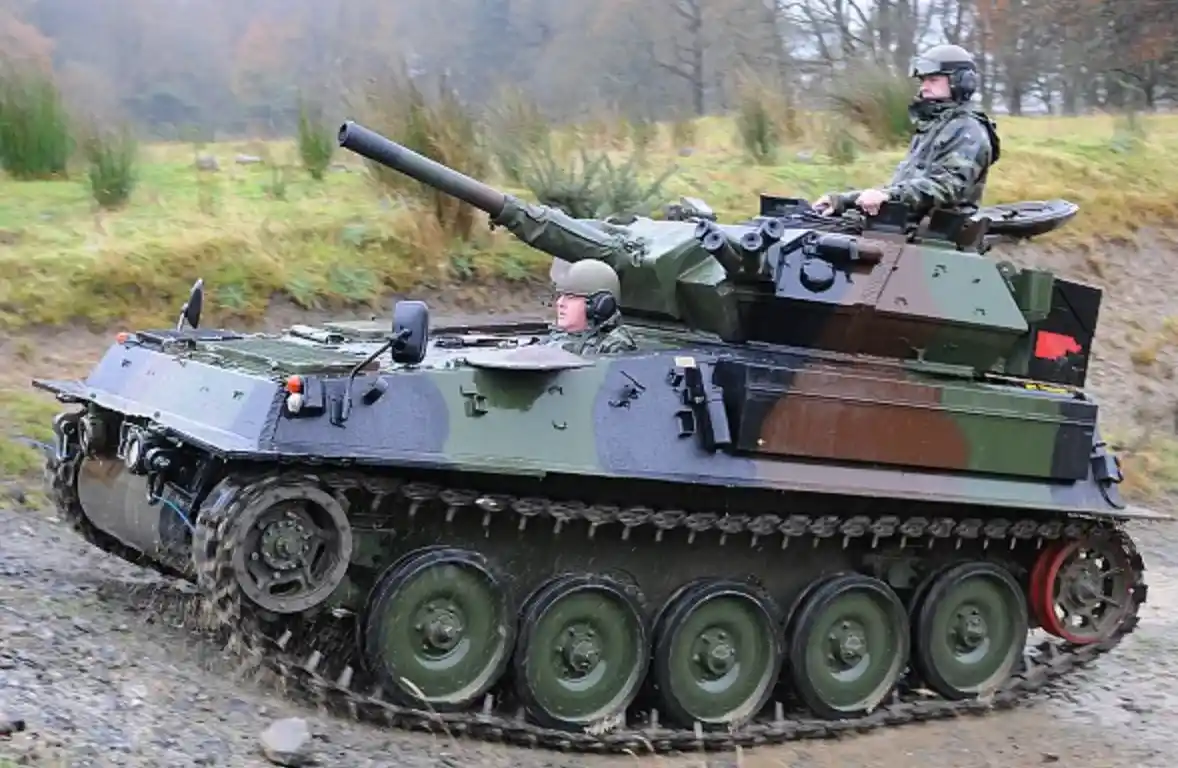
The development of the Alvis FV101 Scorpion Tank stemmed from the British Army’s recognition in the 1960s that it needed a more agile reconnaissance vehicle capable of maneuvering across diverse terrain while delivering sufficient firepower.
The Ministry of Defence tasked Alvis Vehicles Ltd (formerly Alvis Car and Engineering Company Ltd) with creating this new vehicle. The first British Scorpion light tank prototype was completed in 1969, followed by extensive testing to evaluate its performance under different conditions. After successfully passing these trials, the FV101 Scorpion Tank was officially introduced into British Army service in 1973.
FV101 Scorpion Tank History
The Combat Vehicle Reconnaissance (Tracked) or CVR(T) family originated from the British Army’s need for a highly mobile, lightweight armored fighting vehicle that could be quickly deployed by air to global conflict zones.
The original concept called the ‘Armoured Vehicle Reconnaissance,’ was intended to feature both a main gun and an anti-tank missile system. However, due to the stringent limitations on the vehicle’s size and weight to ensure air transportability, the full design goal could not be met.
These constraints led to the use of aluminum alloy for the hull construction and the installation of a modified car engine for propulsion. The anti-tank function was ultimately assigned to a specialized variant, the Striker, while what became the Scorpion fv101 variant focused on the fire support role, equipped with a 76 mm gun.
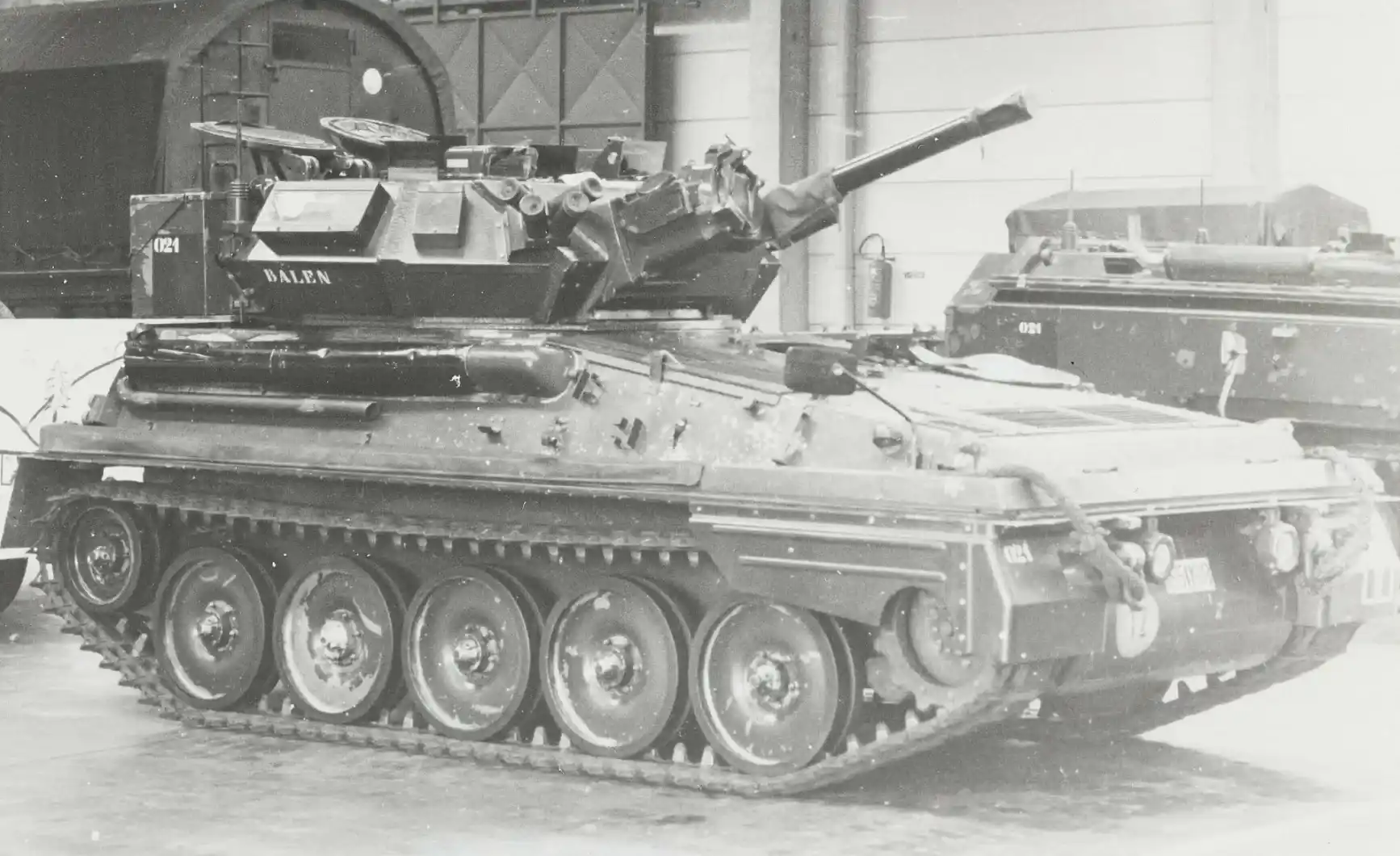
In 1967, Alvis secured the contract to develop 30 prototypes of the CVR(T) series. The initial batch, designated as P1–P17, comprised the Scorpion prototypes, which were delivered punctually and within the allocated budget.
These prototypes underwent extensive testing in diverse environments, from the freezing conditions of Norway to the extreme heat of Australia, Abu Dhabi, and Canada.
Following these rigorous trials, the British Army formally accepted the Scorpion in May 1970, with an initial order of 275 units, which was later increased to 313. Production began in 1972, and the first regiment to receive the Scorpion was the Blues and Royals of the Household Cavalry in 1973.
Alvis eventually produced over 3,000 Scorpions, supplying not only the British Army and the Royal Air Force Regiment but also a variety of international customers. A key design feature of the entire CVR(T) series was its air-portability; two Scorpions could fit inside a Lockheed C-130 Hercules aircraft for rapid deployment.
FV101 Scorpion Tank Armament
The FV101 Scorpion Tank is equipped with a fully rotating, two-man turret constructed from welded aluminum, providing both mobility and protection. Its primary weapon is a 76mm L23A1 low-velocity gun, which offers versatility through the use of multiple ammunition types, including high-explosive (HE), high-explosive squash head (HESH), smoke, and canister rounds.
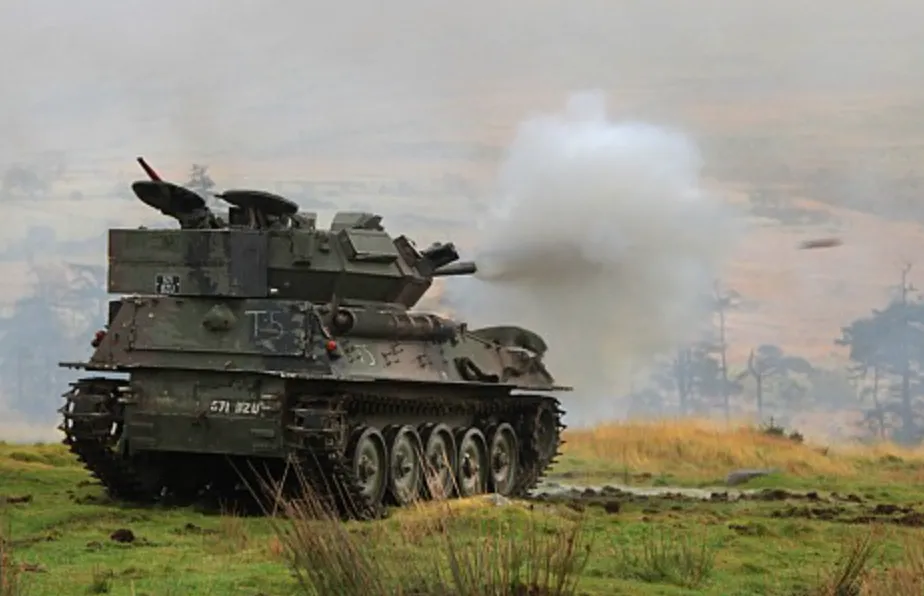
The Scorpion’s gun is optimized for targeting infantry, lightly armored vehicles, and fortified positions. Although not specifically intended for engagements against heavily armored tanks, the HESH rounds are capable of inflicting damage on vulnerable or lightly armored areas of enemy vehicles.
The turret’s gun elevation and traverse are primarily operated manually, though an optional powered traverse system can be installed to enhance the vehicle’s responsiveness in combat.
The 76mm gun has an elevation range of +35º and a depression of -10º, allowing for effective engagement across varying terrain, while the turret can achieve a full 360º rotation, giving the crew enhanced flexibility in targeting.
In addition to its main armament, the FV101 Scorpion Tank is armed with a coaxial 7.62mm L37A2 machine gun mounted to the left of the main gun.

This secondary weapon adds firepower against enemy infantry and light vehicles, complementing the primary 76mm gun. For added tactical capability, the turret is fitted with two sets of four-barreled, electrically operated smoke grenade launchers on either side.
These can be used to deploy smoke screens to obscure the vehicle’s movements, providing concealment during maneuvers or a tactical withdrawal. The smoke grenades can be fired either one at a time or in rapid succession to produce a denser and more effective smoke screen, offering critical protection in active combat situations.
FV101 Scorpion Tank Design
The FV101 Scorpion Tank is engineered with a compact yet efficient layout, divided into three key sections. The driver’s position is located in the front left of the hull, while the powerpack, which houses the engine and transmission, is positioned to the front right.
The turret, which forms the rear section of the vehicle, accommodates the commander and gunner. This light reconnaissance tank operates with a three-person crew: the driver, commander, and gunner.
The commander is seated on the left side of the turret, with the gunner positioned to the right, both within the confines of an all-welded aluminum armor turret.
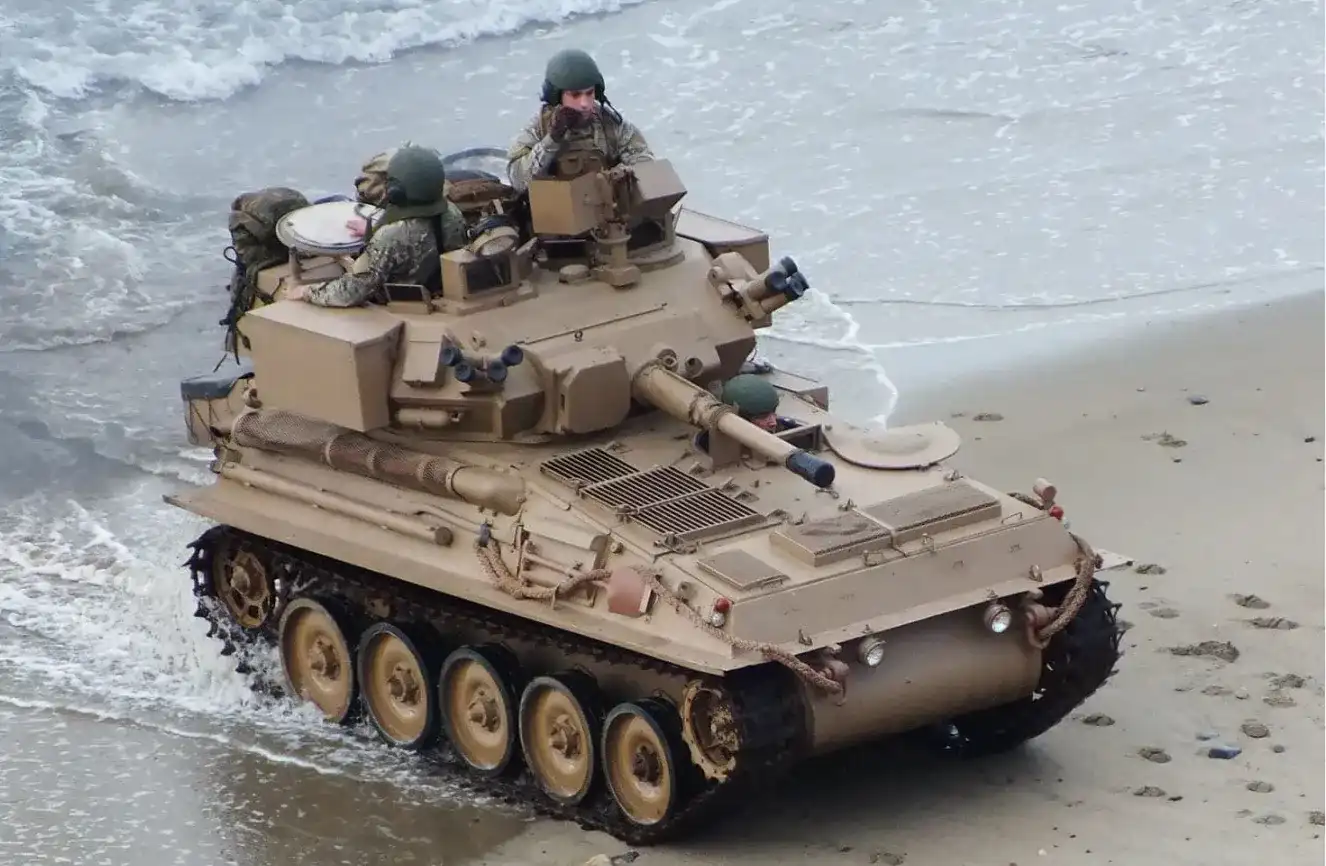
The hull and turret are constructed from high-grade, all-welded aluminum armor. This design provides substantial protection for the crew, particularly at the vehicle’s front, which can withstand direct hits from 14.5 mm projectiles.
In addition, the rest of the vehicle is armored to resist 7.62 mm armor-piercing rounds. Beyond these kinetic threats, the aluminum armor also offers robust protection against shrapnel from artillery shell bursts, enhancing survivability in combat scenarios involving indirect fire.
Overall, the Scorpion’s design balances mobility and defense, making it a versatile platform for reconnaissance and light combat roles.
Mobility and Maneuverability
The FV101 Scorpion Tank is equipped with a Jaguar J60 4.2-liter inline six-cylinder petrol engine, generating approximately 195 horsepower. This engine is paired with a TN15 X-type transmission system, which offers seven forward gears and one reverse gear.
This combination of powertrain components enables the Scorpion to optimize its power delivery, allowing it to perform efficiently in a variety of driving scenarios, both on and off-road.
On paved roads, the Scorpion can reach a top speed of around 80 km/h, while maintaining strong off-road mobility, making it suitable for a range of terrain conditions. Additionally, the vehicle boasts a maximum cruising range of up to 640 kilometers, providing impressive operational endurance.
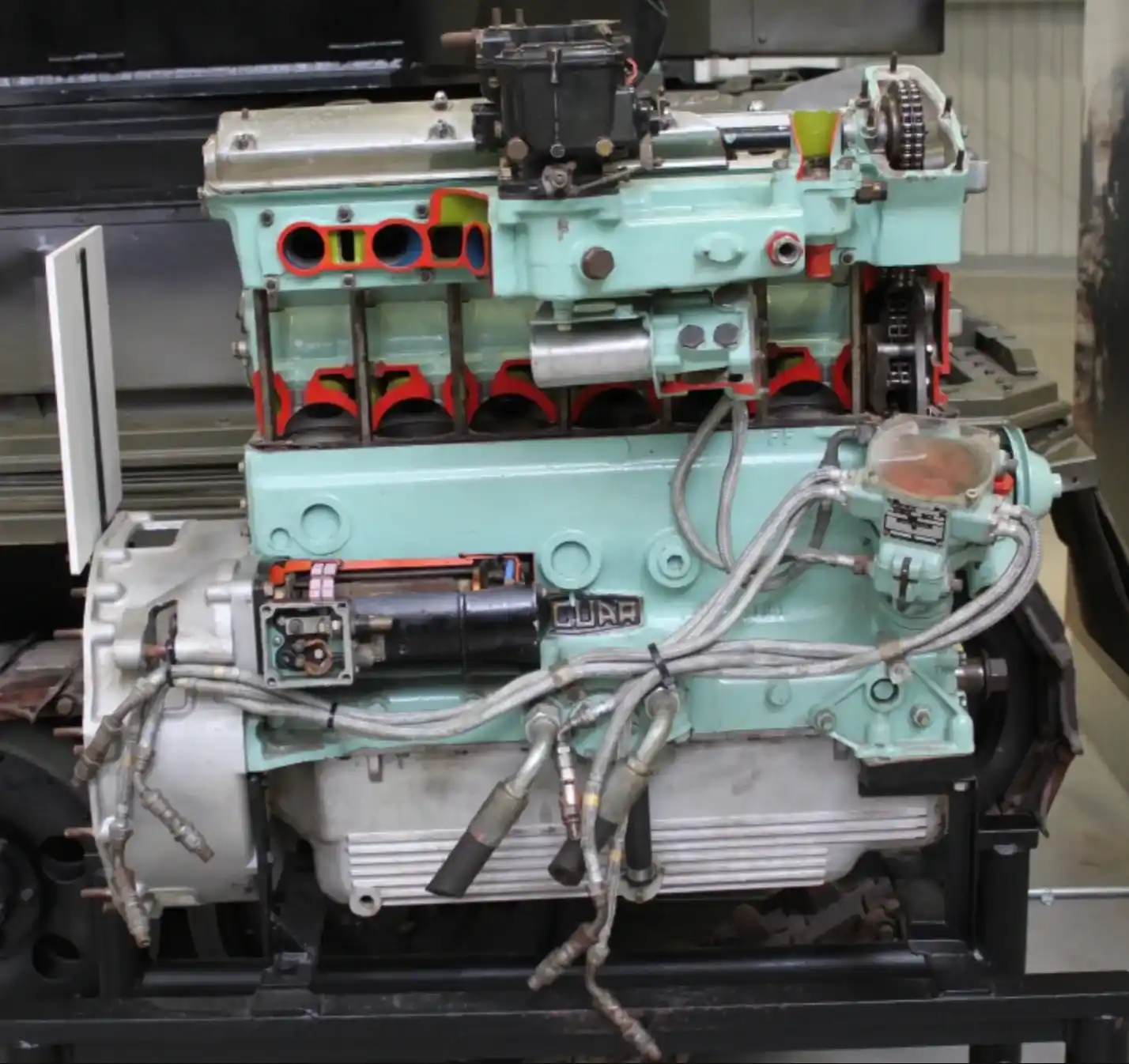
The Scorpion is equipped with a torsion bar suspension system, featuring five rubber-tired aluminum road wheels on each side. The drive sprocket is positioned at the front of the vehicle, with the idler wheel located at the rear.
This suspension setup ensures a smooth and stable ride over challenging terrain, further enhanced by the inclusion of hydraulic shock absorbers and bump stops.
These components help mitigate the impact of obstacles and maintain vehicle stability, particularly during high-speed operations. Notably, the Scorpion’s suspension system does not incorporate track-return rollers, simplifying the overall design.
In terms of its mobility, the Scorpion can handle side slopes up to 30 degrees, cross trenches as wide as 2 meters, and climb vertical obstacles up to 0.5 meters in height. Although not designed as an amphibious vehicle, the FV101 Scorpion Tank can be adapted for limited water crossings by installing a flotation screen.
This modification allows the vehicle to float and propel itself through shallow water using its tracks, though its performance in water is significantly limited compared to vehicles specifically designed for amphibious operations. With the flotation screen in place, the Scorpion can navigate small rivers or shallow bodies of water, offering some versatility in amphibious scenarios.
Combat Equipment
The FV101 Scorpion light tank comes equipped with a variety of onboard systems designed to support communication, navigation, and combat effectiveness in diverse operational environments.
One of the critical components is its advanced radio communication suite, which allows the crew to stay in contact with other units and higher command structures during missions.
This system typically incorporates both VHF and HF radios, ensuring reliable communication across different frequencies and distances. For internal communication between crew members, an intercom system is also installed, enhancing coordination and operational efficiency within the vehicle.

To enhance battlefield awareness and target acquisition, the Scorpion is equipped with specialized optical sights for both the commander and the gunner. These sighting systems generally feature day and night vision capabilities, providing clear visual aids in various lighting conditions.
Additionally, a laser rangefinder is integrated to accurately measure the distance to targets, improving the vehicle’s engagement precision. Located on the right side of the main weapon is a passive night sight, now developed by BAE Systems, offering a ×5.8 magnification (with an 8º field of view) and a low-power ×1.6 magnification (28º field of view), allowing for effective observation and targeting in low-light conditions.
For navigation, the Scorpion may be outfitted with a Global Positioning System (GPS) or other modern navigational tools, enabling the crew to pinpoint their location and plan routes with precision during operations.
In scenarios where electronic systems may fail, traditional manual navigation options, such as a compass and map storage, are also available to ensure mission continuity.
The vehicle’s standard equipment includes a Nuclear, Biological, and Chemical (NBC) protection system. This system is vital for safeguarding the crew against hazardous contaminants during NBC threats, featuring air filtration and an overpressure mechanism to prevent the infiltration of dangerous substances.
Additionally, the Scorpion is equipped with an automatic fire suppression system, designed to detect and extinguish fires rapidly, mitigating the risk posed by combat damage or mechanical malfunctions, and ensuring the safety of the crew and vehicle during operations.
FV101 Scorpion Tank Variants
FV101 Scorpion 90 (Scorpion 2)
The Scorpion 90, also referred to as the Scorpion 2, was an upgraded version of the original Scorpion light tank. This variant was specifically designed for the export market and was equipped with a long-barrelled Cockerill Mk3 M-A1 90mm gun.
The enhanced firepower provided by this gun made the Scorpion 90 a more capable platform for engaging a wider range of armored threats, making it an appealing option for nations seeking an affordable yet powerful light tank.
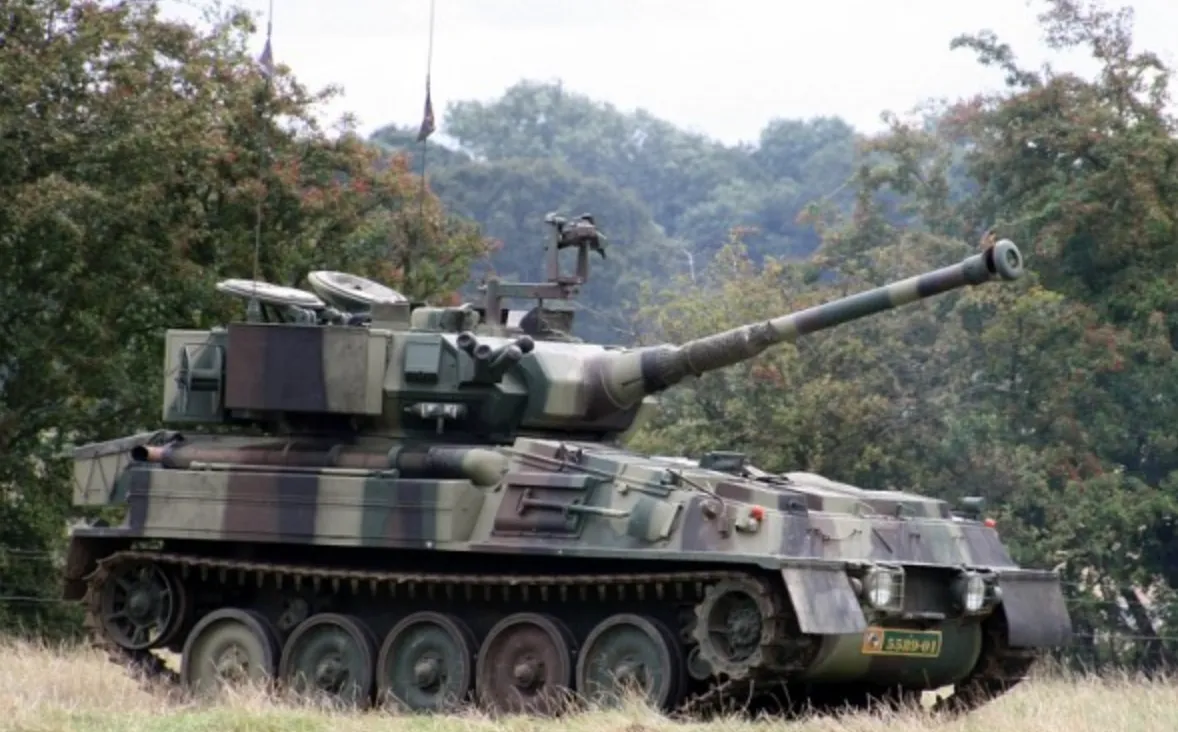
Sabre Reconnaissance Vehicle
Following the withdrawal of the Scorpion from British Army service, many of its hulls were refurbished and repurposed.
These modified hulls were paired with surplus turrets from the FV 721 Fox CVR(W) wheeled reconnaissance vehicle to create a new composite vehicle known as the Sabre reconnaissance vehicle.
This combination allowed the Sabre to continue serving as a reconnaissance platform with enhanced capabilities, bridging the gap left by the retirement of the original Scorpion while utilizing existing surplus components.
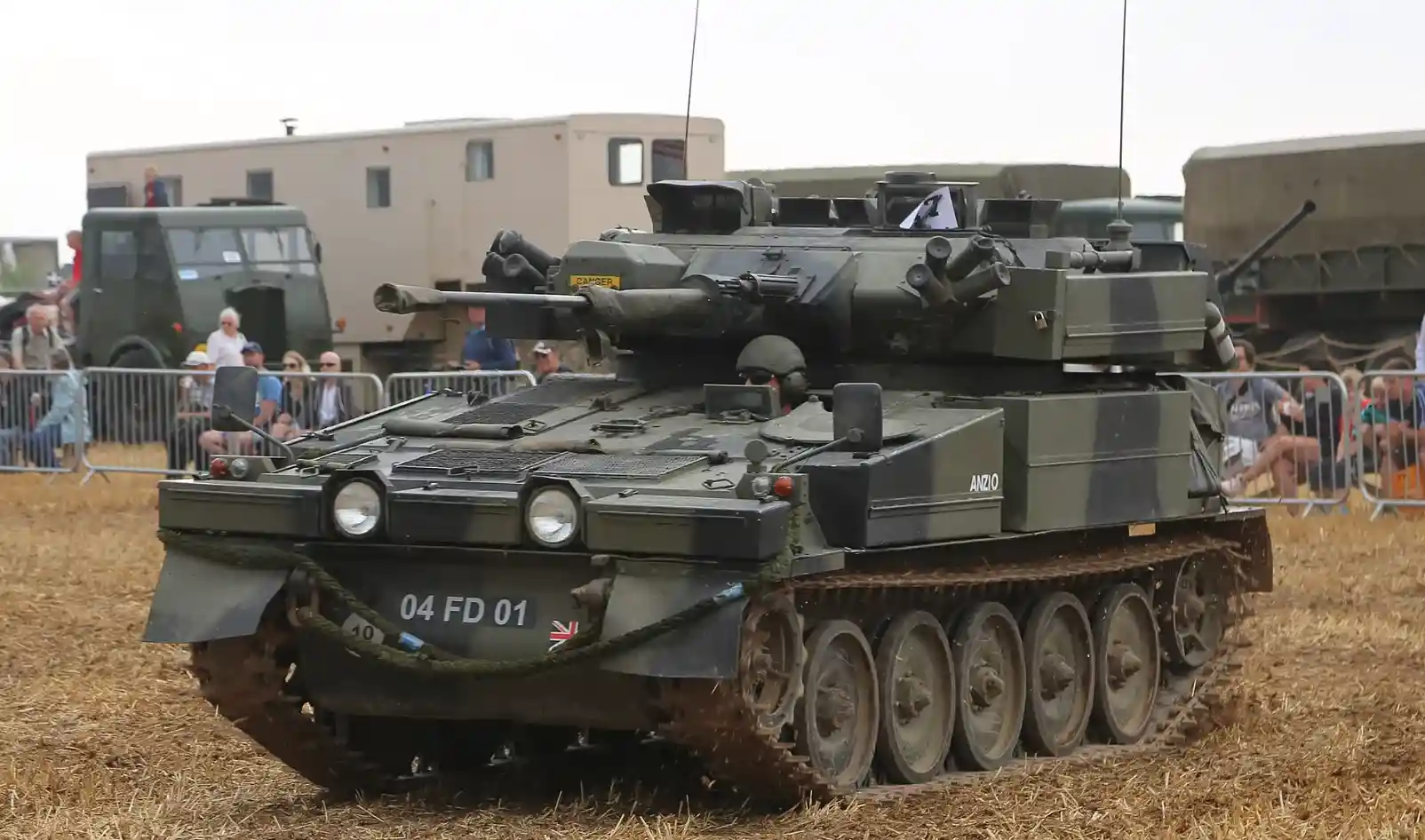
FV101 Scorpion Tank Specifications
- Type: Reconnaissance vehicle, light tank
- Country of Origin: United Kingdom
Service History:
- Years in Service: 1973 to present
- Countries of Use: Botswana, Brunei, Chile, Indonesia, Iran, Malaysia, Mauritania, Nigeria, Philippines, Togo, and Venezuela. Former users include the United Kingdom, Belgium, Australia, Ireland, Jordan, New Zealand, Oman, Iraq, Thailand, Bangladesh, Sri Lanka, and Uruguay.
Production Information:
- Manufacturer: Alvis Vehicles, based in Coventry, England
- Total Units Produced: Around 3,000 vehicles
- Approximately 1,500 units were produced for the United Kingdom.
- Roughly 1,500 units were exported to other countries.
Technical Specifications:
- Weight: 17,800 pounds (equivalent to 8.074 metric tonnes)
- Dimensions:
- Length: 5.288 meters (17 feet 4.2 inches)
- Width: 2.134 meters (7 feet)
- Height: 2.102 meters (6 feet 10.8 inches)
- Crew Capacity: 3 personnel
Armament:
- Primary Weapon:
- ROF 76mm L23A1 gun
- Scorpion 90 variant is equipped with a 90mm Cockerill Mk3 M-A1 gun
- Secondary Weapon:
- Coaxial 7.62mm L43A1 machine gun
Protection and Armor:
- Armor Composition: Made from aluminum, cast armor, and 1318b plate
- Thickness of Armor: 13 mm on the front and sides
Powertrain and Mobility:
- Engine:
- Jaguar J60 Mk 100b 4.2-litre
- Produces 190 horsepower (140 kW)
- Power-to-Weight Ratio:
- 22.92 horsepower per tonne
- Transmission:
- Self Change Gears TN15X transmission system
- Suspension:
- Torsion-bar suspension
Performance:
- Operational Range: Capable of covering up to 756 kilometers (470 miles)
- FV101 Scorpion Top Speed: Can reach speeds of 72.5 km/h (45.0 mph)
Share
Defense Feeds
Defense Feeds is publication focusing on informing, engaging, and empowering the world by providing accurate information from defense technology.
Powered by Defense Feeds © 2025 – All rights reserved.


